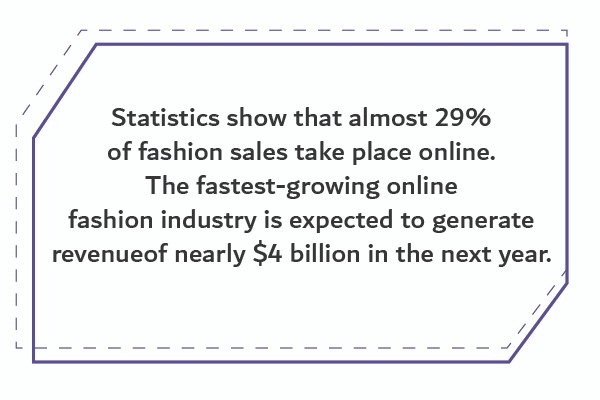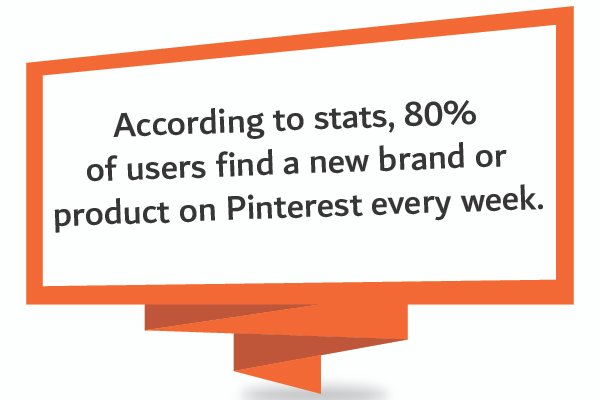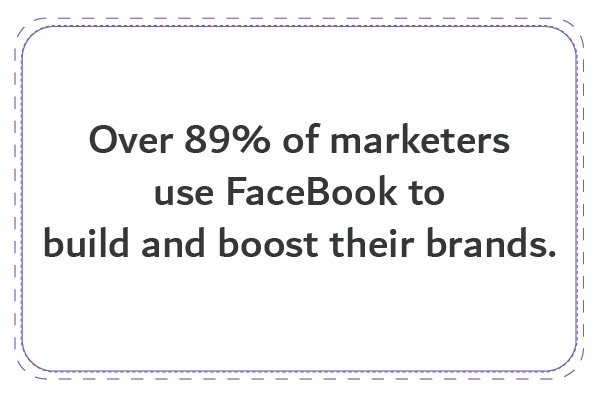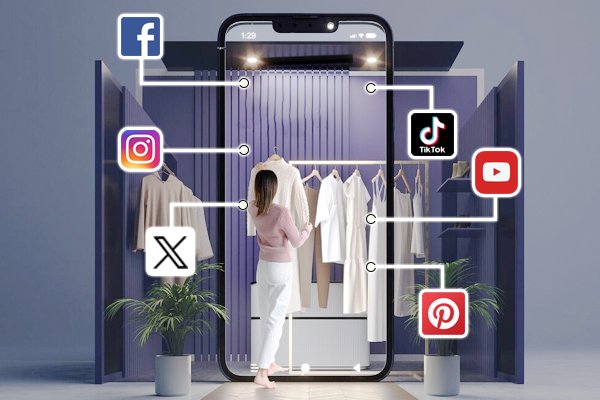Crafting an Effective Social Media Marketing Proposal for Your Clothing Brand: Leveraging Platforms for Maximum Impact
SOCIAL MEDIA PLATFORMS - SOCIAL MEDIA MARKETING PROPOSALS - CLOTHING BRAND
Published On: March 11, 2024
With a massive user base of 5.17 billion, social media directly impacts how businesses market their products. Gone are the days when a few business tycoons dominated the market, and it was difficult for newer and smaller firms to make their mark in their respective niches. Today, anyone can start a small business, boost brand awareness and generate revenue with well-conceived social media marketing proposals.
The dawn of social media marketing has significantly boosted the fashion game, catapulting the fashion industry to new heights of success!
Social media is the ultimate game-changer for fashion brands of all sizes. It allows them to interact with a real-time audience at almost no fee. Now, it is easy for these businesses to set up their virtual stores and stay relevant by keeping up with rapidly changing trends and consumer preferences. Here, we will discuss 7 top social media platforms that can help fashion brands establish themselves as industry leaders, build
brand loyalty, and ultimately drive growth in an increasingly competitive market.
Social media and the fashion industry:
Social media has revolutionized the way the fashion industry works. Statistics show that almost 29% of fashion sales take place online. The fastest-growing online fashion industry is expected to generate revenue of nearly $4 billion in the next year.
Social media is crucial for the fashion industry because it can improve the brand’s visibility and recognition, connect directly with consumers, and
drive sales. Social media marketing proposals provide a medium for fashion brands to showcase their products, engage with followers, and build a loyal fan community. Through social media, fashion brands can make the most of influencer partnerships, user-generated content, and targeted advertising to reach a wider audience and drive engagement.
7 Social media platforms to boost your fashion brand's awareness
When promoting a clothing brand on social media, choosing platforms that align with your target audience and brand’s personality is essential. Here are seven social media platforms that often work well for clothing brands.
10% Off Storewide Oqq.com Coupon Code
Enjoy a 10% discount on a wide selection of activewear, gymwear, and athleisure apparel with the Oqq discount code. Discover high-quality, stylish, and comfortable options perfect for workouts or casual wear at a reduced price today.
Upto 65% Off Decoweb Discount
We're excited to offer you a fantastic deal! You can now enjoy up to 65% off on all your orders. This is an incredible opportunity to save big on a wide range of products.
1. Instagram:
With over 2 billion active monthly users, Instagram is the ultimate social media platform for fashion enthusiasts. Most fashion brands center their social media marketing proposals on getting more Instagram followers.
Instagram has over one billion active users, providing a massive audience for fashion brands. Its highly visual nature aligns perfectly with the aesthetics of the fashion industry, making it an ideal platform to show clothing lines. Fashion brands can utilize Instagram's photo and video-sharing features to display their products visually compellingly, inspiring and engaging their audience effectively. By using visuals infused with brand identity elements such as colors, messaging and logos made by a
logo maker of your choice, you can make your fashion brand memorable in the eyes of new and old audiences.
Instagram features Stories, Reels, and IGTV, out of which Reels generate the most likes and saves. This allows brands to offer behind-the-scenes glimpses, styling tips, and interactive content. Instagram enables fashion brands to establish their unique style and personality, driving brand loyalty and sales through more profound connections with their audience. The app also has a business account option to create an online store.
2. Pinterest:
Pinterest is an easy-to-use app that lets people ‘pin’ or save their favourite photos, videos, or other content as inspiration. With over 482 million monthly users, Pinterest is an excellent
social media marketing option for a fashion brand.
Pinterest is highly visual, making it an ideal platform to show fashion brands through visual appeal. Users often turn to Pinterest for fashion inspiration, creating a receptive audience for fashion brands to advertise their products. According to stats, 80% of users find a new brand or product on Pinterest every week.
Pins on Pinterest have a longer lifespan than other platforms, allowing your fashion brand's content to be discoverable over time. People can find content according to their interests using Pinterest as a search engine. Optimizing your pins with relevant keywords can improve your brand's visibility.
Pinterest can drive significant traffic to your website or
digital storefront, making it valuable for increasing brand exposure and potential sales. Pinterest fosters a community of users who actively engage with content through likes, re-pins, and comments, providing opportunities for your fashion brand to connect with its audience.
3. Facebook:
Facebook is the most used social media platform worldwide. Over 89% of marketers use this platform to build and boost their brands. All social media marketing proposals should capitalize on Facebook's roughly 3.05 billion monthly active users, making it the world's most extensive online social network.
Facebook Groups and Pages enable fashion brands to foster communities around their brand, encouraging interaction, feedback, and loyalty among followers. Facebook's analytics tools provide valuable insights into audience demographics, engagement metrics, and ad performance, allowing fashion brands to optimize their marketing strategies effectively.
Facebook integrates seamlessly with Instagram, facilitating cross-promotion and allowing fashion brands to leverage both platforms for maximum visibility and engagement. With features like Facebook Shops, fashion brands can quickly sell their products directly on the platform, providing a convenient shopping experience for customers.
Facebook also offers discounts to its customers in collaboration with discount and promo code websites, such as
ClothingRIC. Fashion brands can collaborate with these websites to provide discounts to their customers.
4. TikTok:
TikTok is the fastest-growing short video-sharing platform, with an astounding 100% user growth rate between 2020 and 2022. Due to its emphasis on short-form video content, many fashion brands use it for social media marketing proposals and to share their content. This allows fashion brands to showcase their products in visually captivating ways, grabbing the audience's attention quickly.
TikTok thrives on trends, making it ideal for fashion brands to stay relevant by participating in prevalent challenges and utilizing trending music to showcase their clothing lines. The platform's algorithm prioritizes content based on engagement, meaning that high-quality and engaging fashion content has the potential to reach a large audience quickly.
An average Android phone user spends roughly 34 hours monthly on the app. TikTok's user base skews younger, making it perfect for fashion brands targeting Gen Z and younger millennials. Its casual and authentic atmosphere allows fashion brands to showcase behind-the-scenes content, DIY tutorials, and user-generated content, fostering a deeper connection with their audience.
TikTok influencers have significant sway over their followers, making collaborations with them an effective way for fashion brands to reach new audiences and increase brand awareness. With features like effects, filters, and text overlays, TikTok offers endless creative opportunities for fashion brands to experiment with storytelling and
branding.
5. YouTube:
YouTube is the global video-sharing and viewing app with 2.5 billion users. Although perceived as an app for content consumption, fashion brands can use YouTube to market their offerings efficiently. It allows brands to showcase their products visually through high-quality videos, such as lookbooks, styling tutorials, and behind-the-scenes footage.
Unlike other social media platforms with time constraints, YouTube allows for longer-form content, enabling fashion brands to delve deeper into their story, mission, and product details. It creates engagement through comments, likes, and shares, providing an opportunity for direct interaction with the audience and building a loyal community around the brand.
It is the second-largest search engine globally, making it easier for potential customers to discover fashion brands through relevant search queries. Fashion brands can monetize their YouTube channels through ads, sponsorships, and affiliate marketing, providing an additional revenue stream while promoting their products.
6. X / Twitter:
When used correctly, Twitter can be an effective marketing tool for the fashion industry. It significantly benefits fashion brands by allowing them to engage with their audience in real time, creating immediate interactions and conversations. With 619 million monthly active users, Twitter is a hub for trending topics and hashtags, making it easy for brands to keep up with the latest fashion trends and join relevant conversations.
Twitter allows fashion brands to connect with influencers, industry experts, and potential collaborators, expanding their reach and credibility. With its character limit and fast-paced nature, Twitter encourages concise and impactful messaging, effectively allowing fashion brands to showcase their personality and unique voices. Fashion brands can leverage Twitter's advertising options, including promoted tweets and trends, to increase brand visibility and drive traffic to their website or promotions.
7. Snapchat:
Snapchat is an instant messaging and media-sharing app famous for its shorter message duration. 406 million active users are currently using it. Fashion firms may effectively reach new consumers by using Snapchat for business.
It is popular among younger demographics, particularly Gen Z, who are highly influential in fashion trends. Its ephemeral nature encourages immediate engagement and creates a sense of exclusivity.
Snapchat offers unique features like AR filters and lenses, allowing fashion brands to showcase products in fun and interactive ways. The platform's Discover section enables brands to reach a wider audience through curated content and influencer collaborations.
Snapchat's Stories feature allows for behind-the-scenes glimpses, sneak peeks of new collections, and real-time updates, fostering a closer connection with new followers.
Conclusion:
In conclusion, using a variety of social media platforms can significantly improve the fashion brand's success and visibility. Every platform has unique benefits and features that meet the needs of various audience demographics and levels of participation. There are many possibilities to explore, ranging from the visually-driven landscapes of Instagram and Pinterest to the short-form, interactive material of TikTok and Snapchat. Through judicious use of social media marketing sites such as Facebook, Twitter, and YouTube, you can expand the reach of your business and interact with your audience in more ways than one.














